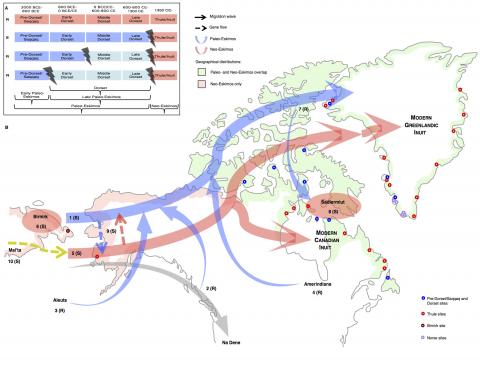Current research themes in the Willerslev group include:

Human population genomics
We use whole-genome sequencing data from ancient and contemporary humans to understand the key demographic processes that contributed to the formation of the genetic diversity, structure, adaptations and disease distributions found in present-day worldwide populations. Since our study of the first ancient modern human genome (Nature 2010), we have published several ancient human population genomics papers on the peopling of the Americas, Europe, Australia and the North American Arctic.
Environmental genomics
We are interested in past evolutionary and ecological processes in populations, communities and ecosystems that shed light on the extant biological diversity and its future trajectories. Ecological topics of particular interest include resilience to past environmental change across the levels of ecological organisation, interaction dynamics between populations of different species on millennial time scales, and the stability of structure and function of past ecosystems. Evolutionary theme broadly covers biological diversification in recent geological history across the kingdoms, and particularly through evolutionary processes such as adaptation, speciation and extinction.
Method development
We work on delivering innovative methods and technologies in ancient genomics to help resolve both new and long-standing scientific questions in the field, for example around the bioinformatics challenges posed by ancient DNA. Of particular interest is the "Mammoth-Elephant" problem where current methods of species identification may often be reporting incorrect species. We have named the problem after finding the "presence" of elephants in ancient environmental DNA samples from the Arctic although the problem is likely to be much larger than this, effecting many other species assemblages across the world. It seems probable that it will also affect metagenomic analyses such as determining the microbes present in the animal gut. In many of these cases a taxonomic misidentification may be much harder to identify and so we are investigating how significant a problem this is likely to be.
